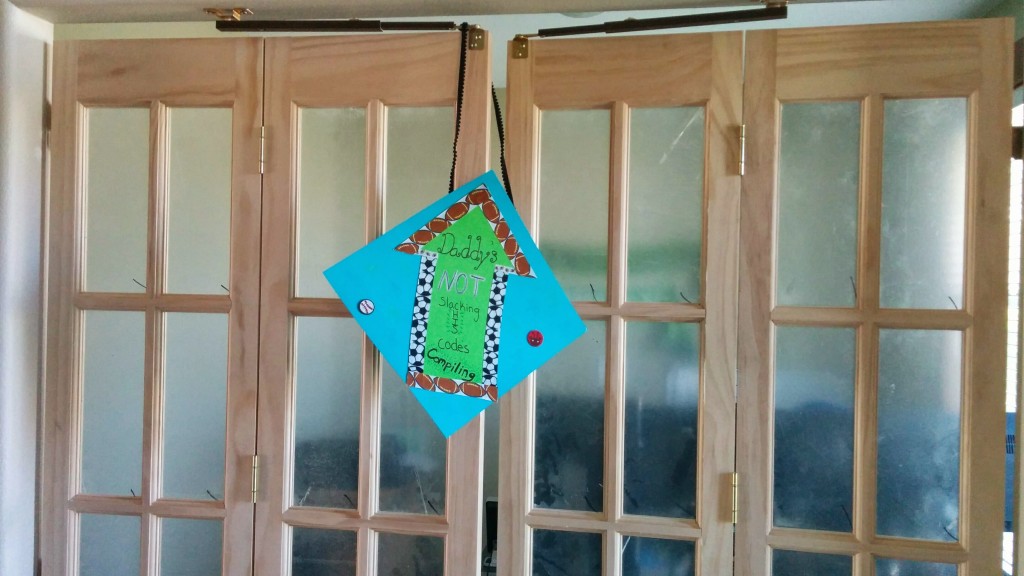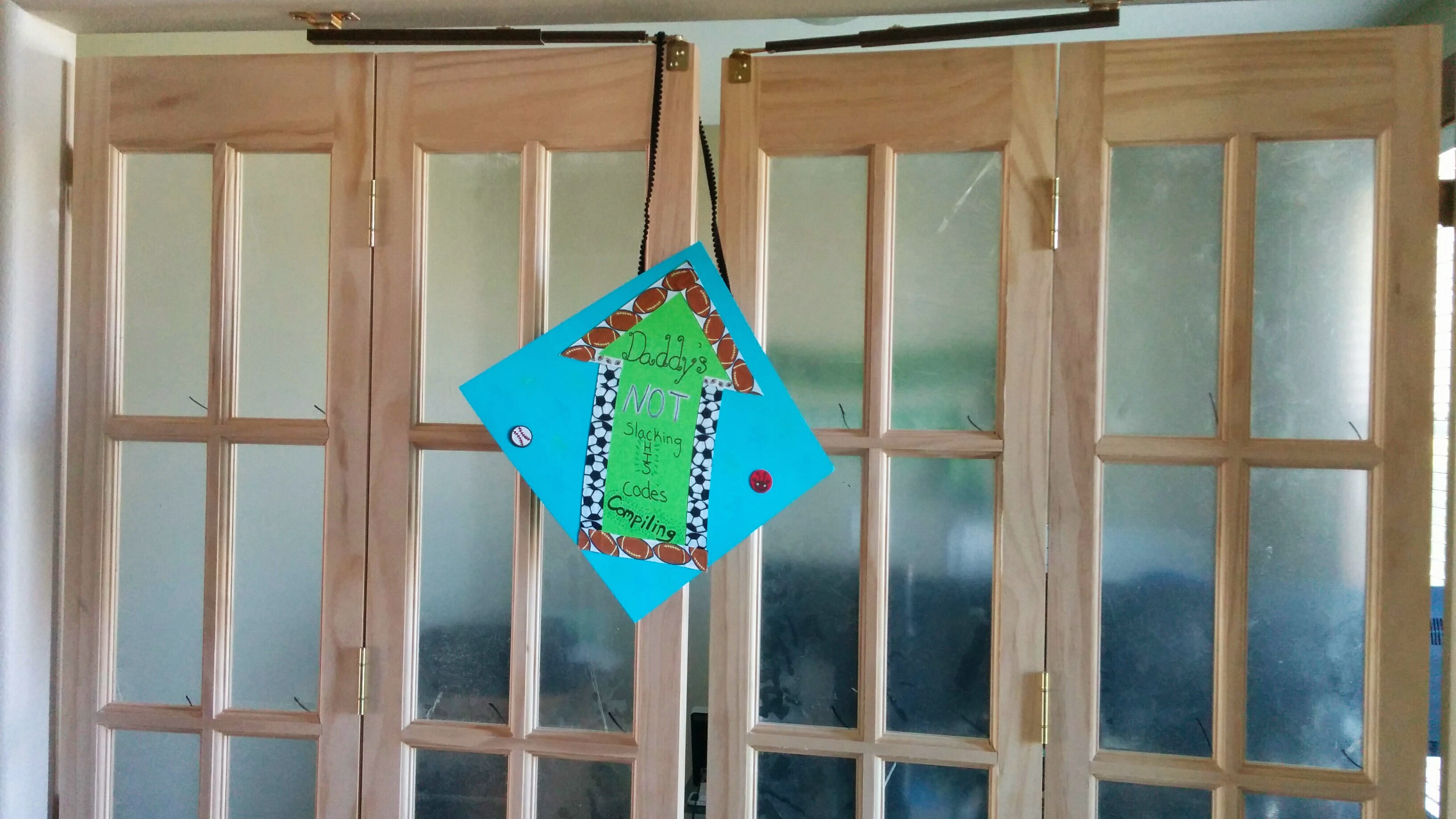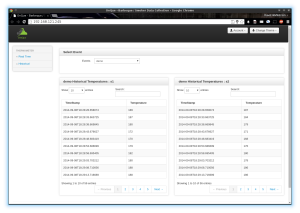As many of you know, I have recently begun living the dream, or what is otherwise called “telecommuting“. I have worked from home for a day or two a week while employed by previous employers, but never full time. I have noticed a bit of a difference between periodically working from home and full-time telecommute. These articles will contain a collection of pitfalls, productivity tips, and general observations that I wish someone shared with me (or that some did share with me).
Have a clean/tidy workspace
One of the most important things for me has been to have a clean workspace. This was something that I took for granted while working in an office that was kept clean by a cleaning staff. When my desk gets messy, I find it hard to concentrate on the task at hand. Here is a snapshot of my desk in what I would consider about 75% clean:

To keep things clean, I try to spend 5 minutes of each work day tidying things up. Also, as part of the weekly garbage pick up, I spend a few extra minutes collecting garbage that may be in my office.
Work-life balance
Work-life balance is the idea that you spend appropriate amounts of time working and not working. This one is particularly difficult for me as my “play” time dovetails into what I do for work. I enjoy programming in python. I enjoy writing toy apps that consume APIs just so that I get exposure to new technologies. I also enjoy gaming, which is less directly related to what my employer pays me for. However, I like to setup servers/services for the games I play, which ends up flirting with what I get paid to do. The point is, it’s hard for me to really draw a line between when I’m doing something for my employer and when I’m doing it for myself (they say if you get a job doing something you enjoy, you’ll never work a day of your life, right?).
One of the main reasons I chose to work from home is to get to spend more time with my family. This also kind of throws a wrench into things as well. On one hand, I enjoy the small interactions that the kids provide throughout the day. Boden will run into the room and show me something he is proud of (usually something like throwing a ball using a new technique). At the same time, it can be hard doing so much context switching. I suspect this will always be something that I deal with, as it is, as mentioned before, part of the reason I chose to work from home. Kids don’t always understand this boundary though and need some sort of reminder. This is why I hung some doors on my office and during my work hours, I hang a sign up that the kids made me to give them a visual reminder that I’m working. I can also tell them “daddy’s sign is up, you need to let me work” and that is easier for them to understand then just “you need to leave daddy alone”.

Reliable internet access
This one is difficult, as most cable companies have monopolies in each area market and honestly, DSL speeds really can’t compete with cable (queue the tears from the DSL fanboys). For me, the options were Comcast residential service, or Comcast business class. Since my employer is willing to cover some of my internet costs, I chose to go with the more expensive business class so that I have an assured 4 hour estimated time to resolution. While a 4 hour outage would suck, it doesn’t completely negate all productivity for the day.
Along with the quicker response time to issues, business class internet removes the 250GB monthly usage cap. Since I spend a fair bit of my work time working on things like VM images, it’s not difficult by any means for me to blow past the 250GB usage cap. In July, I used about 375GB and in August, I used about 450GB. While Comcast didn’t cut off my access, they have reserved the right to do so, which would have probably not made my employer happy.
Summary
The above tips are the first few steps I took towards ensuring that I am setting myself up to be productive, but they are by no means the only things I’ve done and certainly may not be important to others who may be considering a telecommute position. I’ll work on documenting other stuff about telecommuting in the near future, but if you have any suggestions/tips/tricks, please share in the comment section below.





